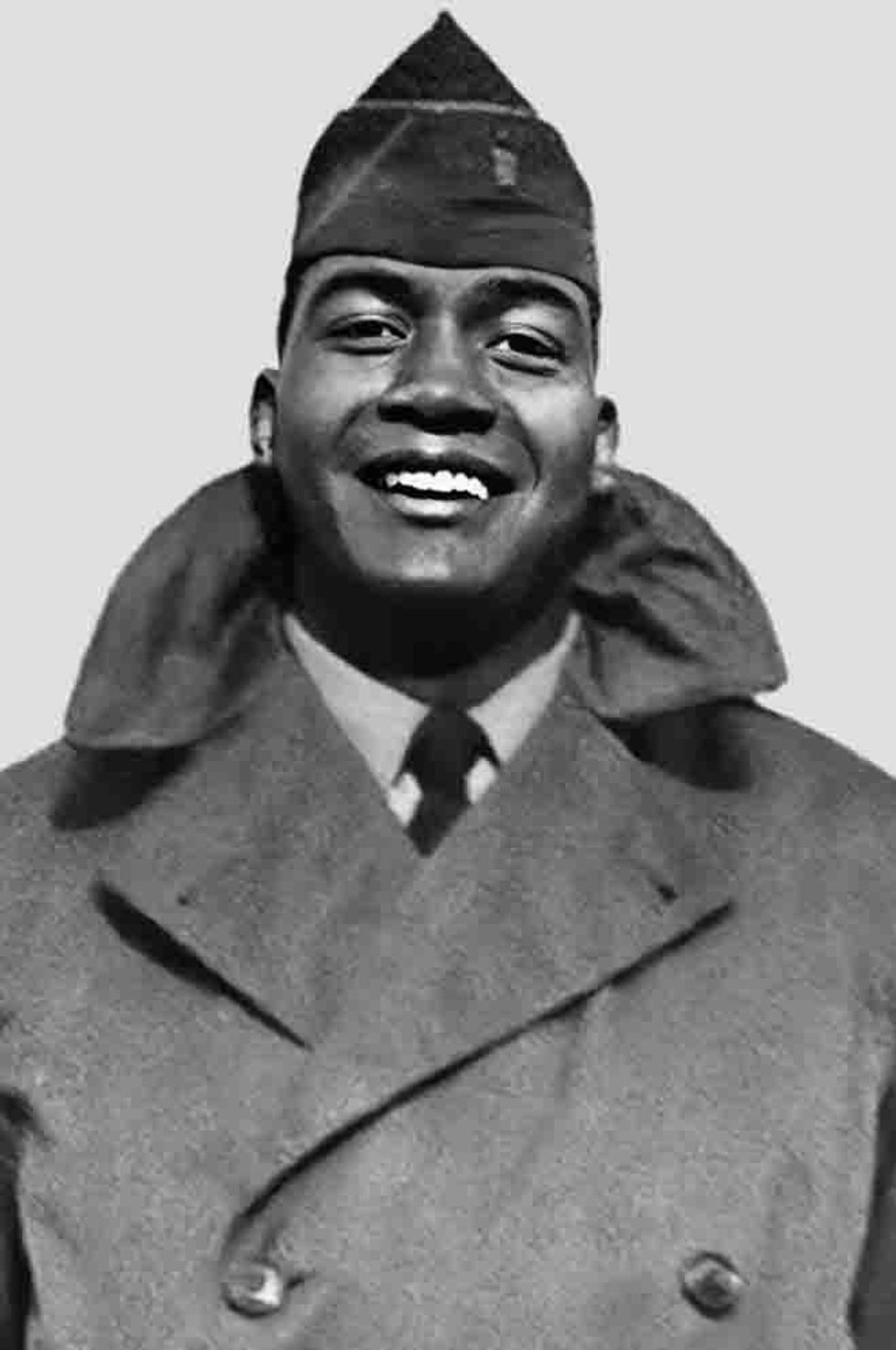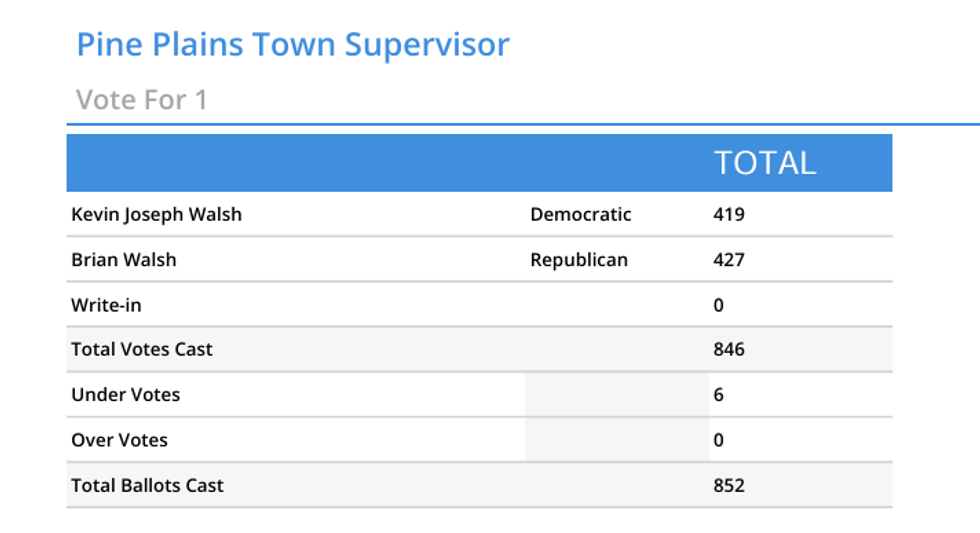‘The Giving Game,’ a guide for leadership

James Turk, author of “The Giving Game.”
Photo by Stephen K. Mac

James Turk, author of “The Giving Game.”
In a rapidly changing business market James Turk’s new book, “The Giving Game,” is a guide for team members transitioning to mangers. As an executive coach and CEO of The Turk Group — a boutique learning and consulting company — Turk has honed his leadership skill set through years of working in Human Resources at Random House, P&O Nedlloyd and Goldman Sachs, not to mention a stint in the acting world. Ultimately, Turk found his niche was in training and development. Now he services notable clients such as Buzzfeed, Spotify, NYSE, and many more.
At a pivotal moment in Turk’s career, he faced two choices: to push through fear, or to sit in the comfort of stagnancy. In the early stages of Turk’s career his supervisor, the head of HR, needed someone to represent the HR department at a sales conference in Chicago. His supervisor sensed Turk’s hesitancy and laid out a high-level plan, conducting practice sessions to ensure success. Despite being scared, Turk presented.
Through perseverance, Turk learned how to trust someone else with his professional development and “how to work through fear and just show up, in spite of it,” he said.
Through this experience, Turk benefited from the results of the “Giving Game.” Turks supervisor saw an opportunity that would aid in his growth, and in response he dedicated time and resources with a mutually beneficial result.
In this book, Turk provides a guide on how new managers can embody this giving mindset. The beginning of a management position is often the most difficult, so Turk outlines the first stage with the “F45 Playbook.” It is critical to gain clarity of manager responsibilities, complete self-assessments, identify key stakeholders, and meet with team members one on one.
With this foundation, managers can begin to lead with intention, empathy, and to cultivate value.
Data shows that employees’ job satisfaction and engagement are linked to their relationship with their direct supervisor. With this comes the power of influence, especially over the workplace climate. Some critical questions managers need to ask themselves include: do people feel heard, seen, and appreciated? Are expectations clear? Do I know my employees’ individual working/learning styles? Is feedback provided and is it effective? Do people feel safe and accepted to be themselves?
In his book, Turk provides helpful resources to answer these questions, such as the Daniel Goleman emotional intelligence (EQ) model and many more that can be found in the Resources section of the book.
The aim of this book is to be immediately useful, and that it is.
When asked how his book can guide young professionals to be leaders in such uncertain and divided times, Turk responded with:
“In uncertain times, people need steady, honest leadership. The book helps young professionals lead with confidence, even without all the answers. It focuses on building trust, supporting your team, and creating a healthy culture. A giving mindset helps leaders move beyond self-preservation and think about how to lift others up — which is
exactly what teams need right now.”
“The Giving Game” is available for purchase on Amazon or at The Dutchess Trading Company in Millerton.
Olivia Geiger is an MFA student at Western Connecticut State Universiry and a lifelong resident of Lakeville.
Family members of Army PFC Charles R. Johnson attended a May 29 ceremony at Nine Partners Cemetery dedicating a permanent marker recognizing Johnson’s Medal of Honor for valor during the Korean War.
MILLBROOK -- Throughout the year, a supportive Millbrook community turned out for civic participation and celebratory events, reinforcing strong local bonds while finding moments of shared pride and reflection.
Among the most significant was the long-sought recognition of PFC Charles R. Johnson, a Millbrook native who was posthumously awarded the Medal of Honor for extraordinary valor during the Korean War.
The honor was presented by President Joseph Biden at a White House ceremony in early January and carried special meaning in Millbrook. In late May, local and county officials, a military honor guard, and Johnson’s friends and family gathered at Nine Partners Cemetery for a ceremony honoring his bravery and dedicating a permanent plaque and flag markers.

Later in the year, Grace Church was filled to capacity as clergy, parishioners and community members gathered for the dedication of a new stained-glass window on the church’s west façade, marking a rare and historic moment for the congregation.
Voters also approved a Capital Budget proposal in May by a wide margin, authorizing more than $38 million for long-needed repairs and renovations to Millbrook Central School District buildings. The project is now proceeding through the schematic design phase.
At the Millbrook Library, a new native pollinator garden was dedicated in early October on the site of a 1953 memorial garden planted by the Millbrook Garden Club in honor of the Flagler family. The family, which has ties to the area, traces its roots to Henry Flagler, a co-founder of Standard Oil and one of the most influential American industrialists in the 19th Century.
Early October also marked the grand opening of the first phase of Bennett Park, developed on the former Bennett College campus. The event drew residents, donors and planning professionals, with a forest-green ribbon cut beneath a tent on the park’s Great Lawn. The phase created Millbrook’s largest public green space, a major undertaking led by the nonprofit Millbrook Community Partnership.

Planning also moved forward on a multi-million-dollar proposal to renovate the historic Thorne Building on Franklin Avenue into a comprehensive arts space, with the Planning Board expected to consider the application in early 2026. The building, which was constructed in the early 20th century and served as a public school, has fallen into disrepair and has largely been vacant for 20 years.
Community spirit was on full display during the long-planned Community Day in September, as residents welcomed visitors from across the region for a day of activities, parades, contests and celebration.
That sense of engagement continued through Millbrook Listens, a year-long effort inviting residents to share their vision for the village’s future, with volunteers gathering input at events throughout the year. Volunteers in colorful T-shirts have appeared at community events ready to listen to any and all ideas.
In the November elections, Washington Democrats won both board seats. Democrats Maxine Verne and Susan Mancuso won the two Town Council seats, defeating Republicans Nicholas Galente and Douglas Giles. Supervisor Gary Ciferri, a Republican, was unopposed.
In 2025, the historic weigh station on South Main Street was approved for reuse as Pine Plains’ first retail cannabis dispensary.
PINE PLAINS — In 2025, Pine Plains advanced plans for a new Town Hall and welcomed new business development, even as the community grappled with the loss of its only grocery store.
The Pine Plains Town Board began in earnest this year the planning stages for a new Town Hall building. Officials plan to construct the facility at 8 N. Main St., neighboring the Bank of Millbrook branch at the intersection of Main and Church Street.
Representatives from LaBella Associates, an architectural firm that frequently works with municipalities, presented draft drawings of the proposed Town Hall in October.
Eastern Region Vice President Pasquale Marchese led the presentation, sharing proposed floor plans and a conceptual sketch of the building’s exterior.
Marchese proposed a single-story structure with a basement for additional storage. Under the current concept, each department of town government would have its own office, arranged in a horseshoe-like configuration around a large central room that would serve as both a courtroom and a board meeting space.
The building and zoning departments would be clustered in one corner of the building, with a dedicated entrance designed to shorten the distance the public must walk to conduct business with those offices.
The proposed design encompasses approximately 6,000 square feet, significantly larger than the existing Town Hall, which contains 2,468 square feet of floor area. The current Town Hall, located at 3284 Route 199, was built in 1970 and houses town government offices, including the courthouse and police department.


Town officials also undertook a sidewalk safety audit in 2025, which identified 385 hazards. In September, Town Board members indicated they would work with a grant writer to seek funding for repairs.
Meanwhile, the Pine Plains Planning Board spent much of the year reviewing two major development proposals: a 50,000-square-foot lumber mill proposed by The Hudson Company and the town’s first retail cannabis dispensary.
The Hudson Company has operated for years in a rented Pine Plains location, but representatives said the business had outgrown its current space and sought to build a new facility to accommodate construction operations, a showroom and office space.
After eight months of site plan review and public hearings, the Planning Board approved the mill at its December meeting. The new facility will be located at 2246 Route 83 along South Main Street, south of the Stewart’s Shops gas station.
And Upstate Pines — a dispensary based in Red Hook, New York — also received approval to open a cannabis shop at 7723 S. Main St.
The dispensary will be located at the site of the historic weigh station building, where farmers used to gather to weigh their crops and livestock for sale. The proposal includes tentative plans to adapt other aging buildings on the property for future uses, such as a grocery store or an ice cream parlor.
A grocery store may soon be sorely needed in Pine Plains, as Peck’s Market all but closed over the past year.
Shelves grew increasingly bare, hours became inconsistent and sparse, and the store quietly shuttered in late September, with no public comment from owners Don and Charlene Peck.
Concerns have since emerged about the impact the loss may have on nearby businesses.

Pine Plains also saw an exceptionally close race for town supervisor. Incumbent Republican Brian Walsh was re-elected after the contest triggered a recount.
The Dutchess County Board of Elections later certified the results, confirming that Walsh defeated Democratic challenger Kevin Walsh by a margin of eight votes.
The North East Town Hall building, where town officials will hold a public hearing on Thursday, Jan. 8, at 7 p.m., on proposed zoning code amendments
MILLERTON — The zoning code changes that will be the focus of a public hearing on Thursday, Jan. 8, represent a major overhaul of the code since it was adopted in the 1970s, placing a strong focus on promoting housing options in the town’s commercial district.
The hearing is scheduled for Jan.8 at 7 p.m. at Town Hall and the draft of the amendments can be found online at townofnortheastny.gov/zoning-review-committee/ or in person at Town Hall or at the NorthEast-Millerton Library.
Zoning regulations, which date to the early 20th century, govern how residents and businesses can use their homes and buildings, and their land. Town officials say their goal in modernizing the code aims to support local business and create new housing options.
While there have been some updates over the years to address specific issues, the changes before the public this time are an ambitious attempt to align with the town’s Comprehensive Plan, which was adopted six years ago.
In this first go-round, the focus is on the town’s commercial districts, such as the so-called Boulevard District that runs along Route 44 to the Connecticut border. Residential and land conservation districts have been included to varying degrees in this proposed update, but largely are to be considered in a second phase of zoning review that soon will be initiated.
A housing focus
The 2019 Comprehensive Plan sought “to promote a variety of housing alternatives” and update zoning laws to allow for higher density development in the Town and Village, noting that fewer than one in five housing types were multi-family dwellings and most of them offered fewer than four units.
The predominant single-family housing stock in the Town and Village dated to the mid-twentieth century; 37% of the housing in the Town and 80% of the housing in the Village was built before 1950.“
This is a sea change but it depends on getting sewers in the Boulevard District,” said Edith Greenwood, who headed the six-member volunteer Zoning Review Committee that worked on all the amendments over years. The committee engaged professional consultants with a goal to make the town’s code more accessible, and streamline approval processes, as well as update language and definitions.
The zoning overhaul, however, addresses more than just housing. The revised code is laid out in extensive detail, and its comprehensive approach requires many pages of documentation — 181 pages to be exact. However, many provisions, regulations and procedures remain unchanged even though they are included in the complete document up for review at the Jan. 8 hearing. Here are some of the changes proposed in the new code:
Multifamily dwellings
Existing code doesn’t contain a section about multifamily dwellings, but the amended code applies standards.
“Multifamily dwellings may be located on upper floors of commercial buildings and/or within standalone buildings,” the amendment provides. “No less than three (3) and no more than twelve (12) individual dwelling units shall be contained in a single building,” according to the draft regulation. Floor areas are defined to conform to New York State codes.
Rental apartments above commercial space
This so-called mixed-use development allows for rental apartments above commercial spaces.
“The intent is to permit mixed use development under carefully regulated conditions to facilitate reinvestment in and the renovation of existing commercial buildings, as well as encourage the development of new mixed-use facilities, resulting in positive economic impacts to those properties and the town at large, while imposing minimal burden on town services and municipal infrastructure,” the draft proposal states.
Adding Affordable Housing standards
The current code is amended to include general standards for affordable housing units, including specifics related to the cost and ownership of such units, among others. Such housing provides homes priced below market rate allowing for housing opportunities to low- to moderate-income families with eligibility based on income.
Proposed affordable housing regulations in North East will limit the cost of affordable rental housing to 30% of 60% of the area median income for Dutchess County. The regulations will limit the cost of so-called “ownership” units to 30% of 80% of the county’s area median income.
Affordable housing regulations provide a benefit to developers, allowing additional commercial space on second and third stories in exchange for placing affordable housing units in the remaining floor area above a commercial space. Commercial buildings are allowed to host additional commercial uses on second and third floors as long as it does not exceed 50% of the floor area of those stories. All remaining floor space must be dedicated to affordable housing.
Accessory Apartment section becomes Accessory Dwelling Unit (ADU)
A section of the current code refers to ‘Accessory Apartments’ but that category is amended to regulate ‘Accessory Dwelling Units,’ which is the current terminology. “An ADU shall be clearly incidental and subordinate to the principal one-family dwelling use and shall not change the one-family residential character of the neighborhood,” the amended code reads.
'Everything but the kitchen sink'
The amended zoning regulations also seek to regulate a wide variety of businesses and activities.
Mobile food vendors will need permits to operate. Electric vehicle charging stations, which didn’t exist in the 1970s, will come under the regulations, including charging stations at residences. Outdoor vehicle storage will have requirements spelled out as well as outdoor dining at restaurants.
EV charging stations are allowed at all residences, but regulations require a zoning permit. Residential chargers are allowed inside garages, on an exterior wall or as a freestanding structure adjacent to a driveway. Chargers are also permitted in parking lots for commercial buildings, subject to site plan approval by the North East Planning Board. Parking regulations get extensive coverage in the amended regulations.
They also include amended regulations for roadside farm stands, cell towers and self-storage warehousing, among many others.
The amended regulations call for the creation of a zoning enforcement officer to receive, review applications for a zoning permit, sign permit and certificate of use, among other duties that include inspections to ensure compliance. The town currently contracts a zoning officer, whose services are shared with the Village and with other municipalities.
The amendments update design standards and site-plan expectations for off-street parking, signage, landscaping and exterior lighting, a category that takes up several pages and even includes illustrations. Motel provisions are deleted and replaced with hotel requirements, and include a requirement prohibiting “the establishment of a tenant/landlord relationship or legal residence by any such occupant.”
A section on cannabis regulates the location and operation of retail cannabis dispensaries “to ensure any such use will be in harmony with and will not have a detrimental effect upon the surrounding area and, that both the location and operation are protective of public health and welfare and preserve quality of life.”Cannabis dispensaries will be permitted within the town as long as they are at least 200 feet “from a private or public school, park, playground, library, adult or child day care, or a place of worship.”
Consumption of cannabis on the premises of a dispensary is prohibited, and an onlooker outside the building must be unable to see or smell the products inside. Regulations also require a detailed operational plan as part of the site plan approval process that would contain information about hours of operation, loitering mitigation, lighting and signage among other details of the business.
Public workshops that have been held with the Town Board to review the proposed changes have for the most part been sparsely attended by the public, as they dragged out for hours while board members quizzed the planning experts as well as the town attorney, Warren Replansky, about detail on any number of zoning matters and how North East’s requirements would align with those of New York State and Dutchess County. The amended zoning regulations have been reviewed by the Dutchess County Department of Planning and Development.
Supervisor Chris Kennan said additional public hearings will be scheduled as necessary. In August, Kennan remarked that the adoption of the updated zoning code amendments could stand as the most significant accomplishment of the current board.
Sharon Hospital in Sharon, Connecticut.
SHARON — Northern Dutchess Paramedics will cease operating in northwest Connecticut at the start of the new year, a move that emergency responders and first selectmen say would replace decades of advanced ambulance coverage with a more limited service arrangement.
Emergency officials say the change would shift the region from a staffed, on-call advanced life support service to a plan centered on a single paramedic covering multiple rural towns, raising concerns about delayed response times and gaps in care during simultaneous emergencies.
The decision became known on Dec. 11 when communities were informed that NDP’s service would end as of Jan. 1, according to Andrea Downs, president of the Falls Village Volunteer Fire Department and an employee of the organization.
Founded in 1994 and based in Rhinebeck, New York, NDP has provided advanced and basic life support ambulance services to communities in Dutchess and Columbia counties in New York, as well as parts of Litchfield County, for nearly three decades.
How the change came about was outlined by Al Tortorella of Sharon, also an employee of NDP.
Tortorella said every Connecticut municipality is required to have an advanced life support provider. For the past 28 years, Sharon Hospital has fulfilled that requirement by signing an annual hospital-sponsored agreement with NDP. In recent years, the agreement was signed by Dr. Ronald Santos, head of the hospital’s emergency department, under whose medical license NDP operates.
When NDP recently approached Santos to renew the agreement, he said he could not sign it, a decision that took the organization by surprise, Tortorella said.
Area towns operate volunteer ambulance squads that provide basic life support. NDP supplements those crews by delivering advanced medical care, administering medications and conducting inter-facility transports.
Sharon Hospital, which is part of Nuvance Health, merged earlier this year with Northwell Health.
Downs and Tortorella said they understand that the hospital system plans to replace NDP with its own paramedic service.
Under the proposed arrangement, a single paramedic would cover the Sharon Hospital catchment area, starting each shift in New Milford before traveling to Sharon. If needed, the paramedic would be assisted by a paid EMT provided by Nuvance.
Tortorella sharply criticized the model. “It’s a system designed to fail,” he said. “This is a huge issue.”
Downs echoed those concerns, noting that the paramedic’s 12-hour shift would include significant travel time between locations. “I’m very concerned about the health and well-being of residents in the Northwest Corner,” she said. “We don’t want any reduction in services for patients in the region. I can’t understand the rationale of taking services away. Northwell wants to maintain a model of corporate health care, but they can’t put a face to the people and culture we’ve established here. We’re talking life and death.”
Downs emphasized that the decision does not involve layoffs at NDP, which was recently acquired by Empress. She said there is ample demand for paramedic services in New York state and that employees’ jobs are secure. The concern, she said, is for the safety of families, friends and neighbors in Northwest Connecticut.
In an interview, Sharon Hospital President and CEO Christina McCulloch and Andrea Rynn, assistant vice president for community, government and public relations at Northwell Health, addressed the decision to discontinue the hospital-sponsored agreement with NDP.
“Recently, concerns were brought to our attention about compliance and [a lack of] communications,” they said. “This information left us unsettled and unable to be a sponsoring hospital at this time.”
They acknowledged that the timing of the transition was far from ideal. “Despite the tight timing, we are actively developing a coverage plan in concert with local first responders and area leaders. This is a process that is just beginning and we are confident it will strengthen over time.”
McCulloch and Rynn said the hospital and health system remain committed to maintaining service continuity and working with community partners to enhance emergency medical services across the region.